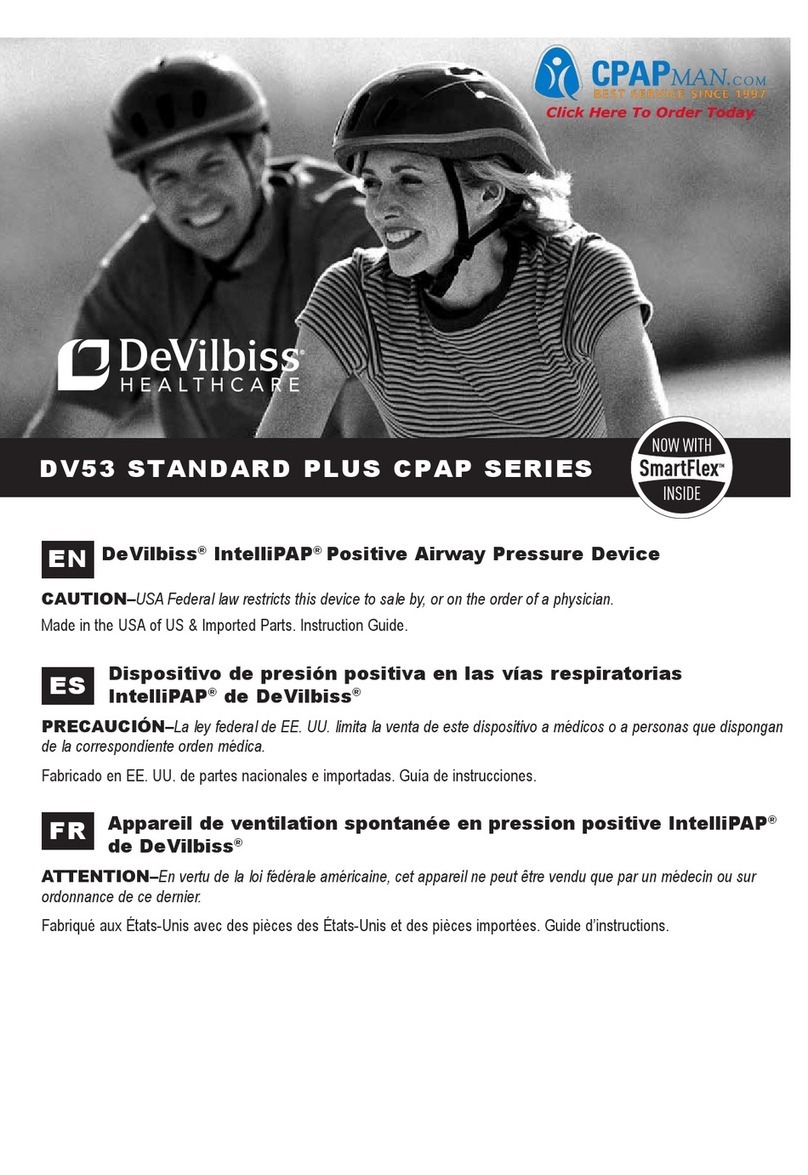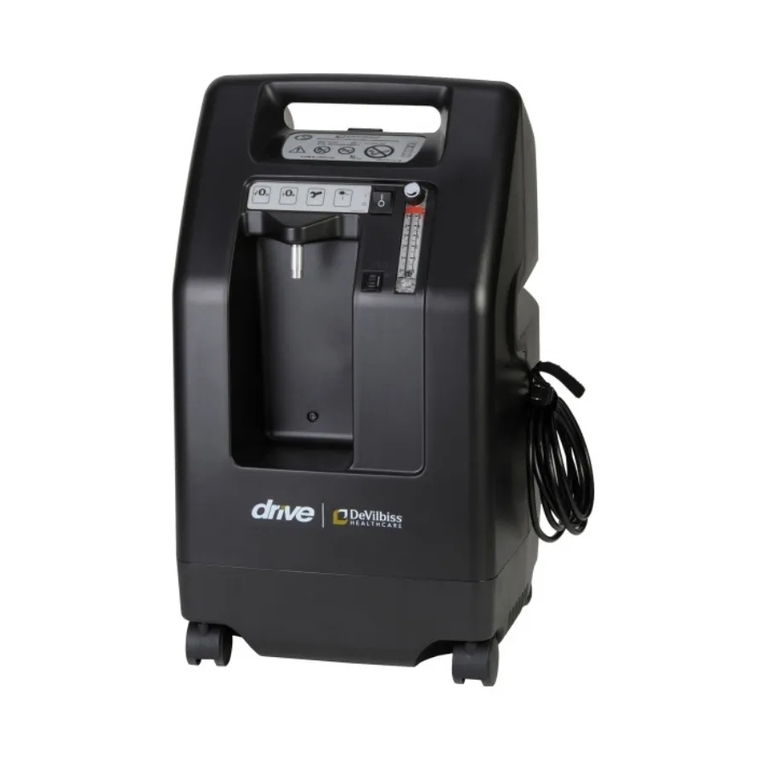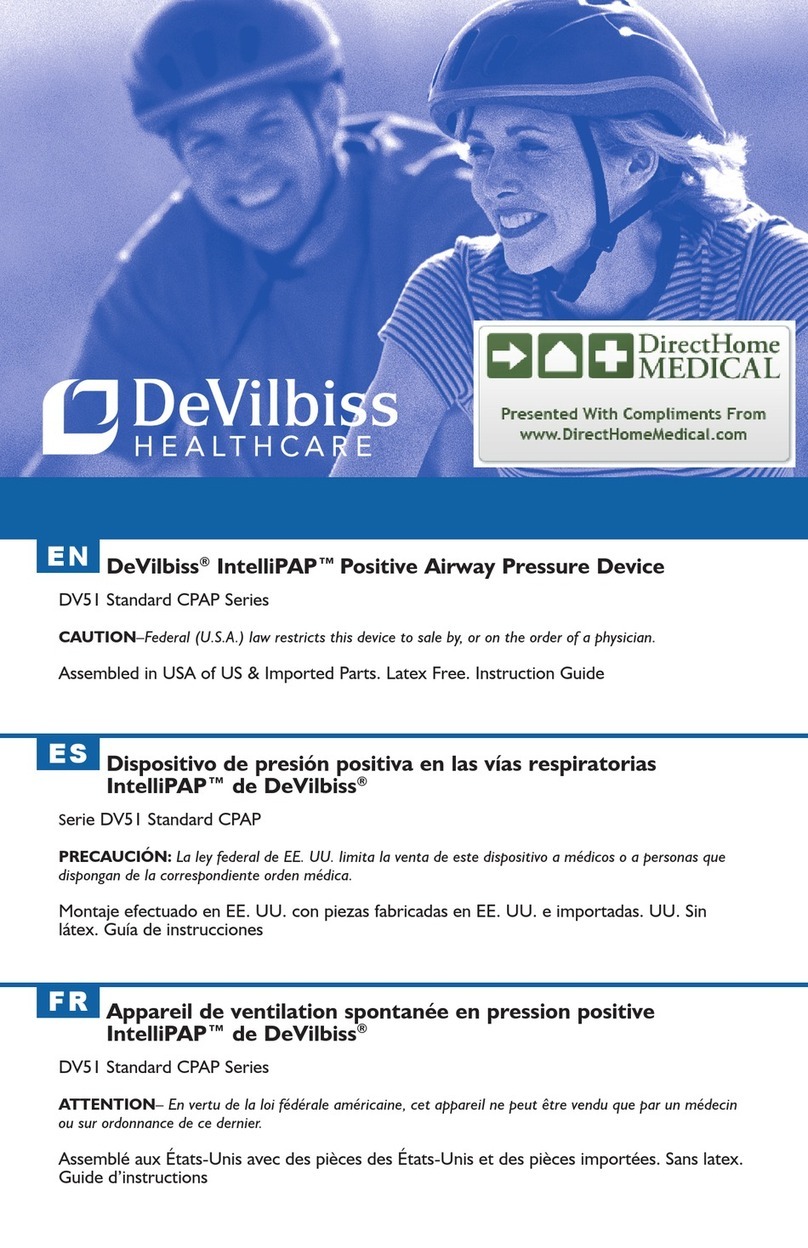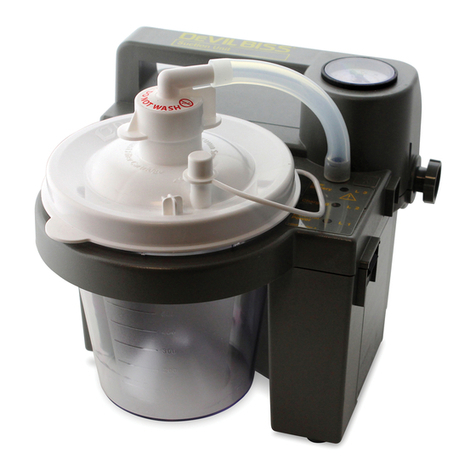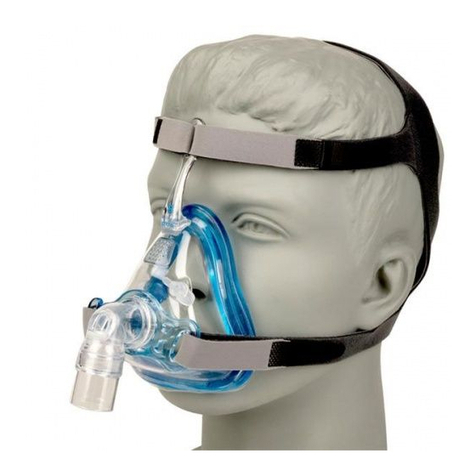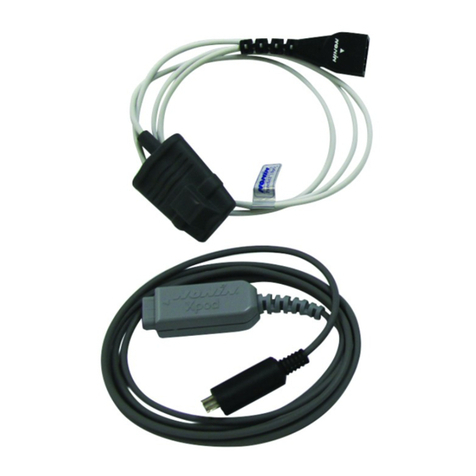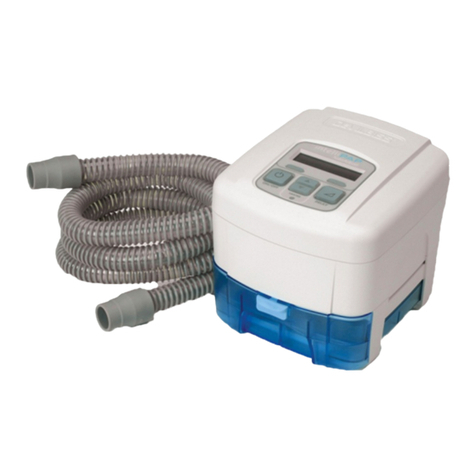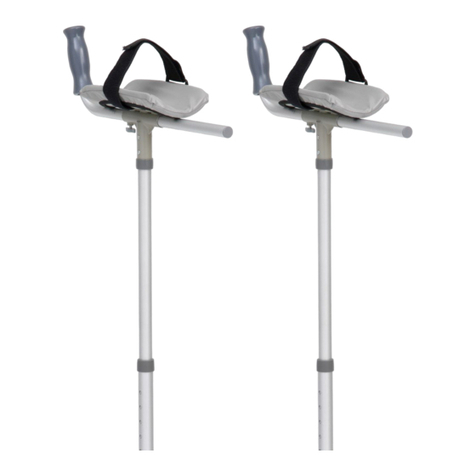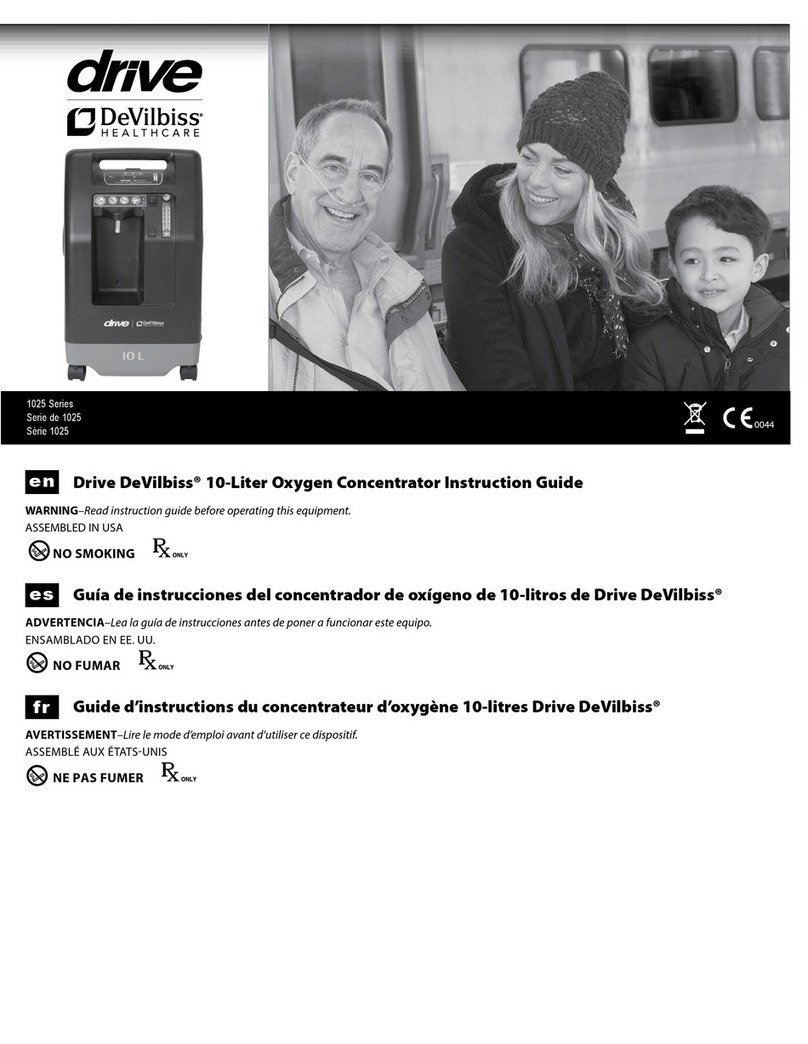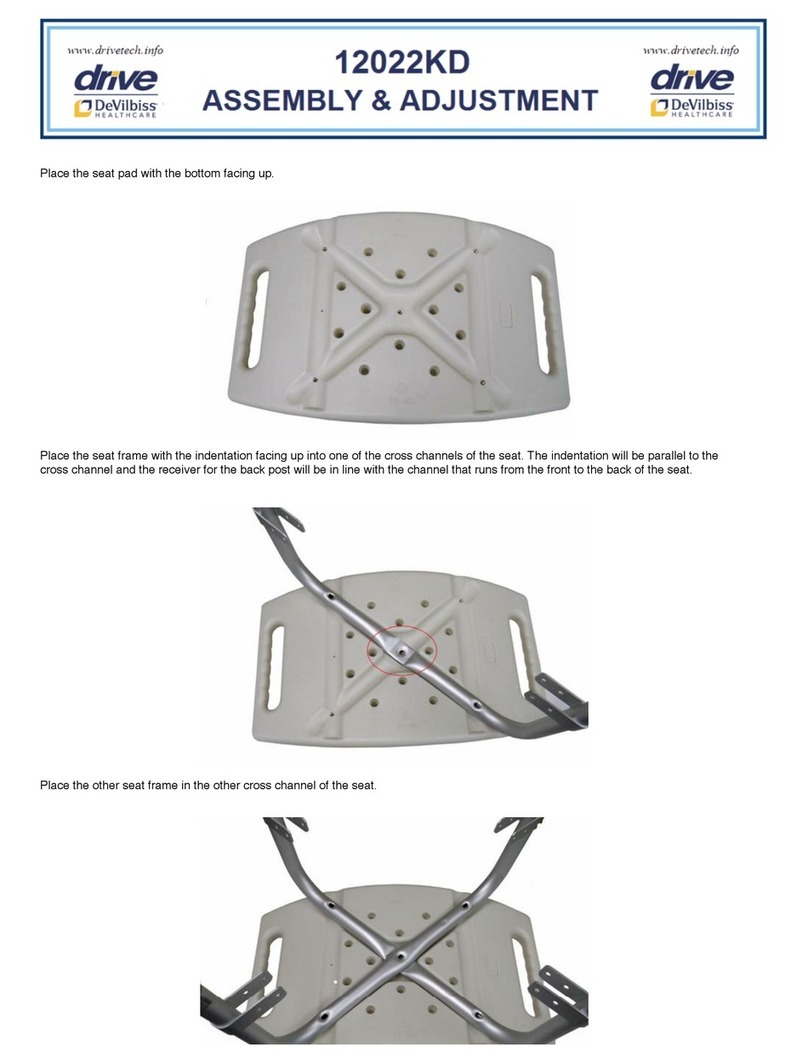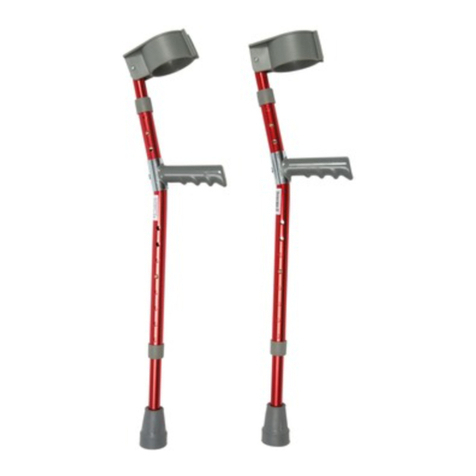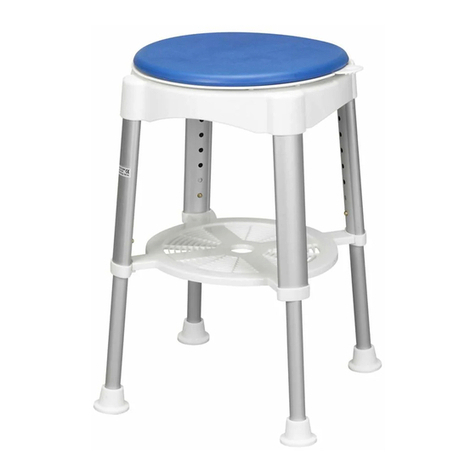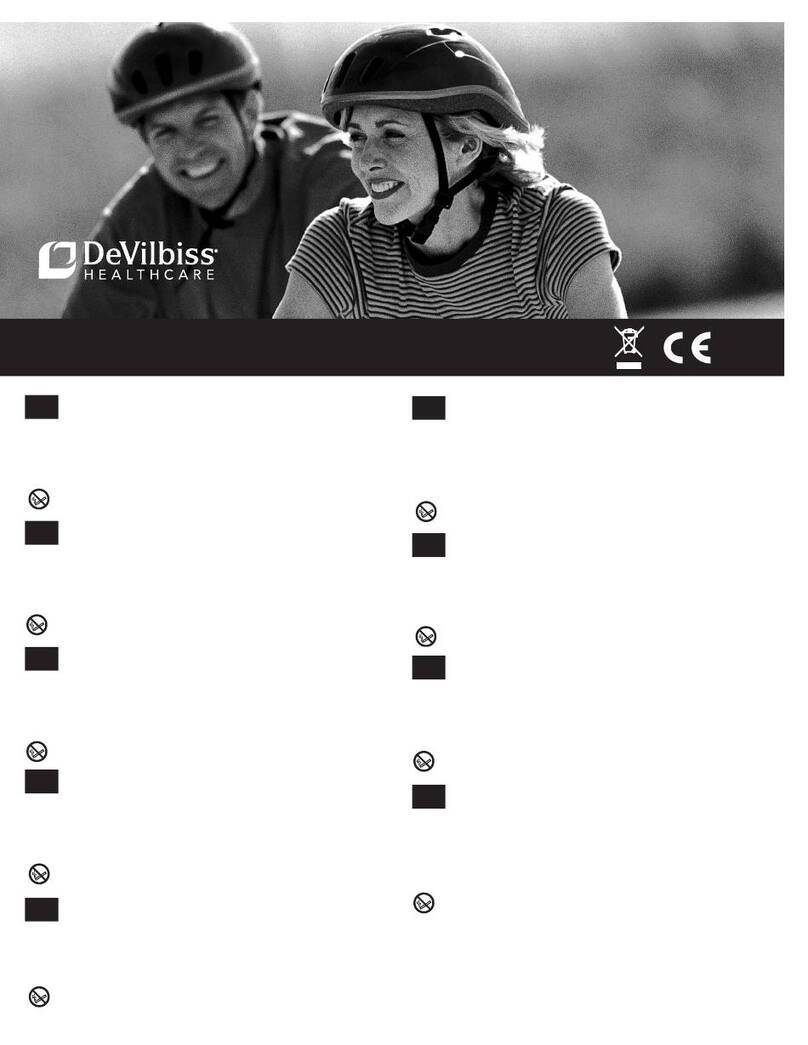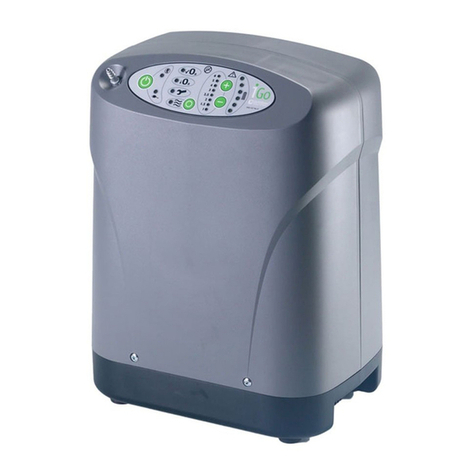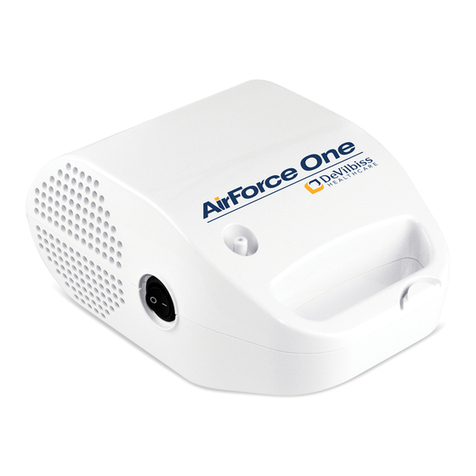
USER AND MAINTENANCE MANUAL FOR
Novaltis
PATIENT LIFT
9
9.4) Routine maintenance
(every month or when necessary, and to be performed by a
competent sta)
The routine maintenance consists in checking the system
functionality:
With the device positioned on a flat floor, check its 4 wheels
are touching the floor.
When the brakes are engaged, the device should not be moved
(flat and adhered floor).
Operate the patient lift with nobody in, check the arm and the
side rails move steadily with no noise.
Control the handles located on the mast and check there is no
play between the arm and the mast, and between the mast
and the side rails.
Check the plastic protective housings and casings are not
broken or cracked, and all parts are present.
Check the condition of the connecting cables: power supply
cord, remote control and cylinder; if a cable shows a slight burn,
wear, or impact sign, or if the wires are visible, immediately
stop using the patient lift, and have the cables replaced by the
engineering department.
9.5) Preventive maintenance
Every year or when necessary, and to be performed by a competent
sta according to paragraphs 9.5.1, 9.5.2 9.5.3 et 9.5.4 below.
It is necessary to control the device every year.
The battery pack should be changed about every 18 months
depending on how it is used.
The yearly maintenance should be performed by skilled technical
sta experienced with electromechanical device maintenance.
The maintenance tasks do not require particular tools; adequate
tools should be used according to the best industry practices.
Mechanical fastening, plays, and adjustments should be realised
according to the best industry practices.
9.5.1) Mechanical control :
Check the welding. Visual control.
Check the alignments. Visual control.
Control and lubrication after dismantling the mast and side rail pivots.
Control and lubrication of the cylinder fastenings.
Check the tightening of all the parts.
Dismantling, cleaning, and lubrication of the front and rear casters.
Dismantling, cleaning, and lubrication of the mast hinge.
Check the fastening, caster play, and brake performance. The
mechanical parts that have cracks, wear signs or geometrical
defects should be replaced with original components delivered
by Drive DeVilbiss Healthcare France.
9.5.2) Electrical inspection :
Check the remote control. Reminder: the warranty does not
apply to the remote control.
Check the charger.
Check the remote control box and the cylinder.
Check the lifting/lowering speed.
Check the emergency stop and lowering.
Condition of the electric cables (change the cables in case of doubt).
Replace the electric cables and/or the components to which they
are connected if there are signs of wear, sheath cut, outlet da-
mage or plastic and sheath darkening around the coupling area.
Replace the electric cables and/or the components to which they
are connected if there are signs of wear, sheath cut, outlet da-
mage or plastic and sheath darkening around the coupling area.
Note: Never disassemble the protective housings of the cylinder,
battery pack, remote control, and control box.
9.5.3) Charging test :
Charge the battery pack.
Check the battery power and autonomy.
Test the device when fully loaded and control the power cut
threshold.
Adjustments and tests.
The battery pack should be changed about every 18 months
depending on how it is used.
The worn or malfunctioning parts should be repla-ced with
original parts manufactured by Drive DeVilbiss Healthcare
France.
9.5.4) Straps :
The straps should be checked at least once a year, or more regu-
larly in case of intensive use, checking that:
Sewing is not undone, the upholstery and strap weft is not visible,
and there is no torn part.
Never use a defective strap.
The worn or malfunctioning parts should be replaced with
original parts manufactured by Drive DeVilbiss Healthcare
France.
Have some tries with a load before commissioning the patient
lift again.
9.5.5) Service book :
Every maintenance operation or intervention should be recorded
in the service book attached to these instructions.
X SHIPPING, STORAGE, AND DISPOSAL
The patient lift should be returned or transported in its original
packaging.
Before storing the patient lift, clean it totally and check its
performance. Store the patient lift in a dry place away from dust
and humidity. The batteries should be totally charged every
3months
When commissioning, after storing, charge the battery pack,
and check its performance before using it again.
Storage temperature :..................................... from 0 to + 50°C
......................................................... Humidity between 10 and 80%
Service temperature :.................................. from + 10 to + 40°C
.........................................................Humidity between 30 and 80%
The disposal of defective parts, packaging and battery pack












